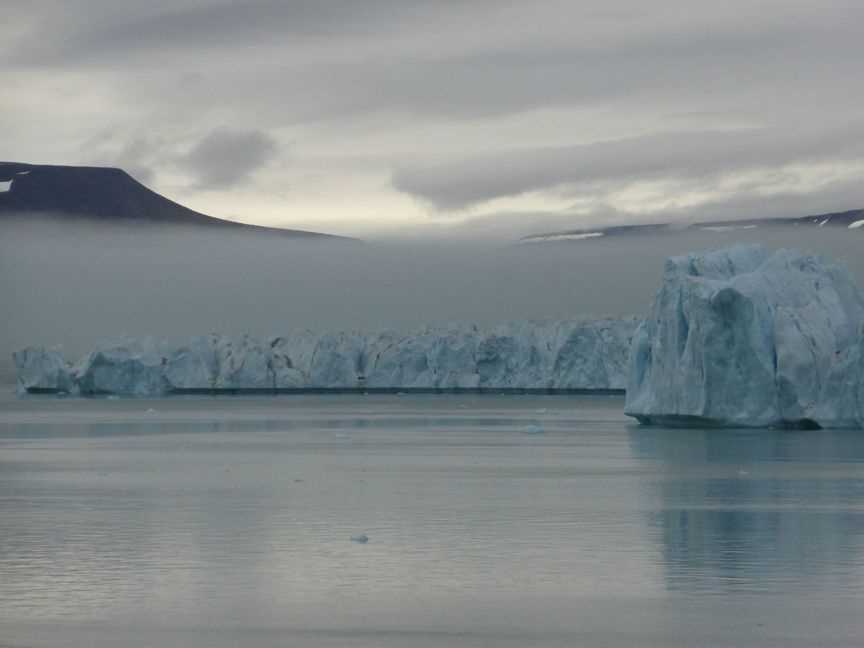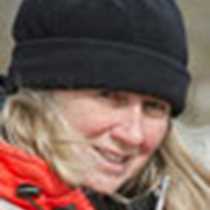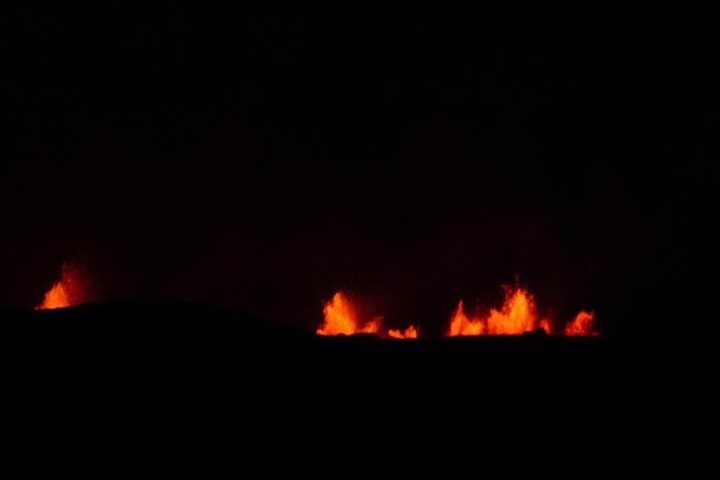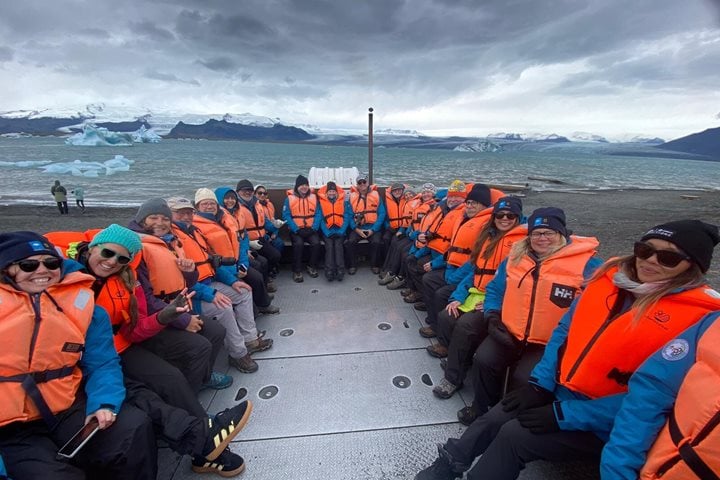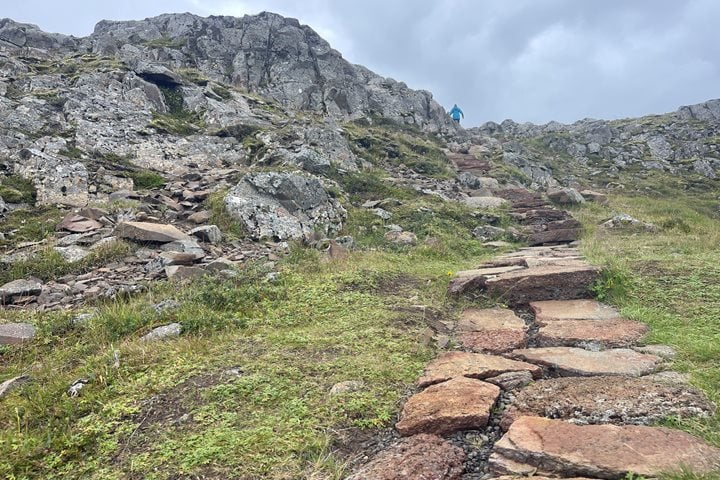When hares grow wings and fly, and ancient archaeology is upstaged by falcons, one might think that they had gone down the rabbit hole where nothing is what it seems or at least what we might think it should be.
Morning starts early for the bridge crowd and today was no exception. Rumors were rampant about an Arctic hare sighting and yes, it was photo confirmed. A search image was created in everyone’s minds and instead of scanning for creamy polar bear dots we were tuned in to discover the elusive “white rabbit, that is not a rabbit but a hare” of the north. Although in more southern latitudes this species might take on a camouflaged pelage for the summer months, here in the high Canadian archipelago they maintain their white coats and black-tipped ears year round. When 12 snowy dots appeared upon a lush green hillside we knew it had to be a convention of bunnies. The ship crept closer and closer in the hope of catching sight of this creature and its strange kangaroo-like flight behavior. But alas, some spots grew long necks and when wings were waved instead of ears, our bunnies morphed into a flock of highly recognizable snow geese. On and on throughout the day, as we scrambled across the tundra, the elusive lagomorph was on our minds. Then just as the last shore excursion was declared to be done, there it was… our giant snowy Arctic hare sitting stock still only a matter of feet away! How refreshing it is to feel such child-like glee!
We look at the world around us with wondering eyes. Tiny tundra plants dance upon the hillsides and now, after several days here in the Canadian north, we can read the stories they tell. We have discovered why they grow where they do and see that the diversity is low. Is the land too soggy to tread upon or is it a carpet of sedges where muskox like to roam? It seemed somehow appropriate to discover the bones of one large old male lying silently below a tiny cemetery overlooking the abandoned Dundas Harbor RCMP base. Had he wandered here to join the ghosts of the past, or crippled by an arthritic joint had it remained behind as the herd roamed on?
Just the word Arctic conjures up images of ice and snow. Upon the flat fractured plateaus of Devon Island, tiny glimpses of its massive ice cap could be seen. Rivers of ice flowed from its edges into deepening valleys and at the head of Croker Bay we were able to come face-to-face with an impressive tidewater glacier. Zodiacs appeared as tiny specks floating upon the ocean as we explored the progeny sent forth by the calving glacier. Fulmars and kittiwakes rode the bergs as if they were busy commuters.
We left the ice behind as we slipped eastward into Dundas Harbor to explore both modern and ancient history. Well, that was the intent at least, but once again the wildlife intervened. At our feet were the treasured remains of 600- year old Thule houses, although our attention was completely focused on two avian occupants of a rocky overlook. Tiny mounds of ptarmigan feathers had been spotted on our hike across the tundra so the presence of a falcon had been hypothesized. Yet no one had expected such a sight as a large and mottled fledgling gyrfalcon and its white-morph attendant parent. It was hard to believe the difference in size. We might totally sympathize with the adult who will continue to feed his or her offspring for another month or so. And down the hill, frozen in place was our big frosty fluffy bunny adding closure to the day.

